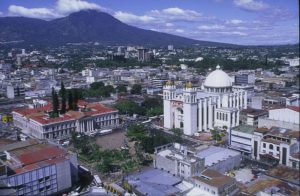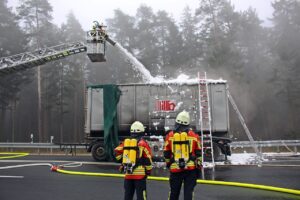Five Advantages Of Travel Risk Management Considerations For Business Travelers
Planning a business trip has its own unique challenges even at the best of times – like lining up transportation for multiple people or securing necessary travel documents or visas – but the most important plans to make are the ones you hope never come to fruition. As Murphy’s Law states, “anything that can go wrong, will go wrong”, which is why contingency plans and crisis preparedness are vital to all business travel.
When you think of travel emergencies, your mind probably goes straight to medical issues, like an illness or an injury contracted abroad. However, there are two other types of emergencies that are not only more dangerous, but (in some cases) more common: natural disasters and political unrest or upheaval. An injury or sickness typically only affects the single traveler, but a natural disaster or political unrest can affect thousands of people at once. So while the triggers for each scenario are different (natural disasters can occur with no warning, political tensions can lead to wars overnight) they lead to the same security and safety concern of high numbers of travelers needing an emergency extraction or evacuation out of the affected area in a short space of time, and with a high demand of local resources.
Resources Become Limited Very Quickly
This is where security and assistance companies come in. Given the volume of people now wanting to leave the region, this puts a very high demand on what are now limited resources: secure ground transport, the ability to go from point A to point B safely and securely, available commercial flights from the nearest airport. It is possible that the airport may be closed, or commercial flights are not willing to fly in for safety reasons, in which case private air charters may be relied on if the airspace has not been temporarily shut down. All of the above would be taken into account by security and logistic specialists. If there are no flights in or out, period, then hibernation, or relocation may be required, and perhaps security teams, or fixers to keep you safe and secure transportation zambia while you shelter in place until you can be transported.
A security company will rely on experience, communication, and a global network to get you safely out of danger. Experience helps make informed decisions in a dynamic, fast-paced environments. Communication means being able to liaise with all parties involved: from the local assets (the local security staff and secure ground transport), your employer, both local and international aviation assets, the local government, your insurance company, and (and most importantly) you. And any response is only as good as the team on the ground, it is critical to have a tried and trusted global asset network because ultimately they will deal with some of the most important parts of the operation, which is keeping you safe. These three attributes are quite literally, lifesavers.
Low-Probability and High-Impact Risks
While these travel situations generally don’t happen every day, it’s important to be prepared by working with a well-resourced security and emergency response company, or leverage your organization’s security departments. Either will be prepared to respond rapidly and efficiently working to avoid you becoming stranded and unable to leave the country. Let’s look at a more common scenario that business travelers may find themselves facing.A small regional airport in the Bahamas is staffed and equipped to handle 200 travelers flying out each day. But then comes a hurricane, or an earthquake, and suddenly 1,000 travelers are flocking to the airport for the next flight out. This small airport now has to cope with 5x the volume with the same number of resources. Worse yet, communications infrastructure may be completely down. Travel becomes rushed or poorly executed, if it happens at all. People get stranded. People get scared, and some may become violent. The strain on airport resources probably also means that security is lacking. You – the business traveler – realize this is a dangerous situation and need to find a way to get to safety.
Network and Leveraged Assets are key
While it looks straightforward, every situation is different and includes variables, but rest assured there are plans B, C, and D to adjust to your unique situation. For example, maybe your area is inaccessible due to flooding or rioting. This is where the GSOC’s local network is advantageous as the teams on the ground will know the alternate route vs. the high-risk routes to avoid so that you can get to the airport safely and efficiently.
The bottom line is to go in prepared. Here’s a summary of what to know and take into account before you travel:
- Read up on the destination and see if they are prone to natural disasters or political turmoil so you know exactly what you will be facing on arrival.
- Should you need to be evacuated, will your insurance pay for it? It’s common for many insurers to enforce a “pay-and-claim” policy, so understand what you may be out of pocket for.
- Ask your insurance company if there is disaster and political evacuation coverage.
- Speak with your employer and ask if they have a corporate coverage plan to pay for a disaster/political evacuation, if so what are terms of activation. Even if your employer says yes, ask them how many times it has been used. If the answer is never then they will literally be doing on-the-job training if you need to be evacuated.
- Find out the name and contact information for your Global Security Operations Center in advance and save it in your phone. Do a little research about them.
- Note, not all GSOC’s are created equal. Some will get in the weeds and hold your hand the entire way, whereas others have a call center mentality, meaning you may spend a lot of time waiting on hold.
- Bigger isn’t always better. Smaller task forces are more likely to provide a personalized, high-touch experience. With larger ones, you may speak to a different person every time you call.
What is an Extraction?
An extraction (or evacuation) is where a person is in harm’s way in their current location, whether that be due medical, security, or natural disaster. Because of this, the person needs to be transferred outside the area where the threat is being presented and taken to a safe zone. This could be to another part of the country or another country entirely. The extractions and evacuations could take place via commercial aircraft, private aircraft, or overland via ground. Whichever option is the safest and quickest is normally the option that is chosen. The overall goal is to transfer the person out of the high-risk zone and to a safe zone as soon as possible.
In extreme cases such as a military coup (think Arab Spring), the extraction protocol is typically as follows:
- Use Secure Ground Transportation Uruguay and armed security guards (location dependent) to safely transport affected individuals to the nearest airport.
- Have pre-arranged air transport ready, whether that be a commercial flight, a private air charter or a helicopter.
- Evacuation out of the affected area to the nearest safe area for further coordination, or back to their country of residence.
As a case study, an example of a major event was the 2011 Japanese earthquake and tsunami. What made this unique were the various issues presenting themselves pretty much at once. Such as large-scale damage to the country’s infrastructure, transportation being severely damaged in certain areas, ongoing powerful aftershocks, and finally the level-7 meltdown of the Fukushima nuclear power plant. When you take into account all of these factors, being able to be extracted out of Japan became an issue. One of the tasks I was involved in was attempting to extract about 200 students. Our first step was to find them which in some cases were quite easy if they were living near their campus. But for the students that were traveling around Japan, it became extremely difficult to locate them due to damaged transportation routes and communications blackouts. Slowly but surely we located everyone and then proceeded to fly everyone out in small groups. Commercial flights were operating at that time but availability was limited and even if you could get a seat it was normally very expensive. To this day I still find it remarkable that the people we were responsible for were all located and not injured. However, being able to have strong teams in the field and excellent relations with the aviation industry allowed us to get people out on an expedited basis.
At ETS Risk Management, we offer a multitude of services from pre-travel risk assessments and consulting, evacuation planning, travel tracking while you are traveling, a global network of on the ground security specialists, secure ground transportation, and global network of aviation assets. We are also able to conduct emergency evacuations globally.








